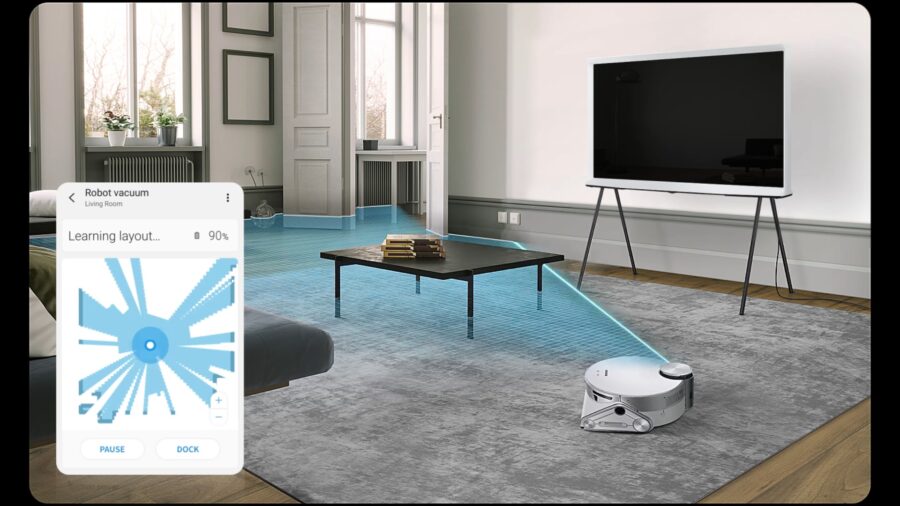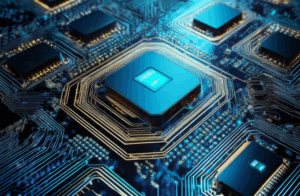The Dawn of a New Smart Home Era: When Tech Worlds Collide
The landscape of smart home technology is undergoing a seismic shift. For years, the market was defined by established appliance manufacturers gradually integrating “smart” features into their products and a handful of tech-native startups carving out niches. However, recent developments signal a new, more disruptive phase. We are witnessing the great convergence, where technology giants from seemingly unrelated sectors—like aerial drones, mobile computing, and autonomous vehicles—are entering the smart appliances market, bringing with them a wealth of advanced technology and a fundamentally different approach to product design. This influx is not merely about adding more competition; it’s about redefining what a smart appliance can and should be.
This trend is forcing a rapid evolution, pushing the boundaries of automation, intelligence, and integration within our homes. The latest Smart Appliances News is no longer just about a refrigerator that can order milk; it’s about the application of sophisticated spatial computing, advanced AI-driven computer vision, and robust robotics platforms to everyday tasks. As these new players leverage their expertise, they are setting new benchmarks for performance and functionality, challenging incumbents and offering consumers a glimpse into a truly autonomous home. This article explores this pivotal trend, analyzing the technologies driving it, the market implications, and what it means for the future of our connected lives.
Section 1: The Convergence Catalyst: Why Now and What’s Driving It?
The entry of non-traditional tech companies into the smart home appliance sector is not a random occurrence but the result of several key technological and market forces converging simultaneously. Understanding these drivers is crucial to appreciating the depth of this transformation and its long-term impact on everything from Robotics News to consumer electronics.
The Maturation of Core Technologies
At the heart of this trend is the maturation and commoditization of advanced technologies that were once the exclusive domain of high-tech, specialized industries. Components and software stacks developed for complex applications are now affordable, reliable, and adaptable enough for consumer-grade products.
- AI and Machine Learning: The latest Smart Home AI News highlights how sophisticated algorithms are becoming commonplace. AI models for object recognition, semantic understanding, and predictive analysis, honed in fields like autonomous driving and aerial surveillance, are now being deployed in home environments. An AI that can identify a person from 500 feet via a drone can be repurposed to distinguish between a pet’s water bowl and a dropped sock.
- Advanced Sensors: The cost of high-precision sensors like LiDAR (Light Detection and Ranging), ToF (Time-of-Flight), and high-resolution cameras has plummeted. This makes it economically viable to integrate them into devices like robot vacuums, providing them with superhuman spatial awareness. This trend is a major topic in AI Sensors & IoT News, as it democratizes perception capabilities.
- Edge Computing: The rise of powerful, energy-efficient processors allows for complex AI calculations to be performed directly on the device (on the “edge”). This is critical for privacy and real-time responsiveness, as it reduces reliance on the cloud. A smart security camera or robot doesn’t need to send video to a server to identify a threat or an obstacle, which is a key theme in AI Edge Devices News.
The Search for New Growth Frontiers
Many established tech markets, such as smartphones and drones, are reaching saturation. Companies that have dominated these spaces are actively seeking new, high-growth ecosystems to expand into. The smart home market, with its vast potential for interconnected devices and recurring revenue streams (via software and services), is a prime target. For a company with deep expertise in robotics, navigation, and battery management, the leap from an aerial drone to a terrestrial home robot is a logical and strategic extension of their core competencies. This diversification is a recurring theme in business-focused Drones & AI News.
The Power of Technology Transference
The most compelling aspect of this convergence is “technology transference”—the application of specialized knowledge from one domain to another. A company that has spent a decade perfecting 3D mapping and obstacle avoidance for drones flying at high speeds has a significant head start in creating a robot vacuum that can navigate a cluttered living room with unparalleled precision. Their expertise in Simultaneous Localization and Mapping (SLAM) algorithms, power management for brushless motors, and sensor fusion is not just relevant; it’s a game-changing advantage over traditional appliance makers who are often playing catch-up on the deep-tech side.

Section 2: A Technical Deep Dive: From Aerial Autonomy to Domestic Duty
To truly grasp the impact of this trend, it’s essential to break down the specific technologies being transferred. Let’s use the potent example of a drone technology company entering the Robotics Vacuum News cycle to illustrate the technical leap forward this represents for smart home appliances.
Revolutionizing Navigation: LiDAR, VSLAM, and 3D Mapping
The single biggest differentiator these new entrants bring is in navigation and environmental understanding. Traditional robot vacuums often relied on simpler infrared “bump” sensors or basic VSLAM (Visual SLAM) using a single camera, which can struggle in low light or with dynamic environments.
- Drone-Grade LiDAR: High-end drones use LiDAR to build intricate, real-time 3D maps of their surroundings for precise flight control and obstacle avoidance. When applied to a robot vacuum, this technology allows the device to map a home with millimeter-level accuracy. It can identify the exact height of furniture to know if it can pass underneath, detect “cliff” edges like stairs instantly, and operate flawlessly in complete darkness. This is a quantum leap from simply bumping into a wall and turning around.
- Advanced VSLAM and Sensor Fusion: Companies with experience in AI-enabled Cameras & Vision News are implementing multi-camera VSLAM systems. By fusing data from cameras, LiDAR, and inertial measurement units (IMUs), these new devices create a rich, multi-layered understanding of a room. This allows them to not just map the space but to semantically understand it—identifying a “kitchen” versus a “living room” and applying different cleaning strategies accordingly.
AI-Powered Perception: Recognizing More Than Just Walls
The second major advantage lies in the sophistication of the onboard AI. A drone’s AI must be able to recognize a vast array of objects to fulfill its mission, from power lines to people. This same core competency is now being applied indoors.
A next-generation robot vacuum, powered by this advanced AI, can:
- Identify and Avoid Problematic Objects: It can recognize and steer clear of specific items that plague older models, such as charging cables, pet waste, shoes, and children’s toys. This moves the device from a semi-autonomous tool that requires pre-cleaning to a truly autonomous household assistant.
- Enable Targeted Cleaning: A user could say, “Clean up the spill near the coffee table,” and the robot, using its camera and AI, would understand the command, locate the table, identify the spill, and clean just that area. This level of interaction is a hot topic in AI Assistants News.
- Double as a Security Device: When not cleaning, the robot can act as a roaming security patrol. The latest AI Security Gadgets News often discusses how mobile platforms with cameras can provide more comprehensive home monitoring than static cameras. The device could patrol the house, use its AI to detect anomalies like an open door or an unrecognized person, and send an alert to the homeowner’s phone.
Section 3: Market Shockwaves and the Evolving Smart Home Ecosystem
The arrival of these tech titans is sending shockwaves through the industry, with significant implications for both incumbent manufacturers and consumers. This isn’t just about better vacuums; it’s about the strategic battle for control of the entire smart home ecosystem.
Disrupting the Old Guard and Fueling Innovation
Established appliance brands are now under immense pressure. Their traditional strengths—manufacturing scale, brand recognition, and retail distribution—are no longer sufficient. The battleground has shifted to software, AI, and user experience. This intense competition is an accelerant for innovation across the board. Incumbents are forced to invest more heavily in R&D, acquire AI startups, and rethink their product roadmaps. For consumers, this “innovation arms race” is overwhelmingly positive, leading to more capable products at more competitive prices. This competitive dynamic is not unique to appliances; similar trends are seen in Autonomous Vehicles News, where tech companies are challenging traditional automakers.
The Ecosystem Play: Beyond a Single Device

These new players are not interested in just selling a single product. Their strategic goal is to integrate the new appliance into their existing ecosystem of hardware, software, and services. A company known for its mobile devices might integrate its robot vacuum controls deeply into its phone’s OS. A company with a cloud platform could use the home mapping data to offer other spatial-aware services. This creates a powerful “walled garden” effect, encouraging brand loyalty.
Imagine a future where your AI Companion Devices News feed reports on a home robot that seamlessly communicates with your AI Lighting Gadgets News to illuminate its path, coordinates with your AI Kitchen Gadgets News to clean up after a meal is prepared, and uses data from your AI Sleep / Wellness Gadgets News to know when to clean the bedroom without disturbing you. This level of deep, cross-device integration is the ultimate endgame.
The Critical Conversation: Data Privacy and Security
With great power comes great responsibility. These new, hyper-aware devices are creating incredibly detailed maps and visual records of the most private spaces in our lives. This raises critical questions that consumers must consider:
- Where is my data stored? Is the map of my home stored locally on the device, or is it uploaded to a company’s server?
- How is my data used? Is the data used solely for navigation, or is it being analyzed for marketing or other purposes?
- How secure is the device? Could a hacker gain access to the device’s camera and effectively have a mobile spy inside my home?
The latest AI Monitoring Devices News is filled with discussions about the need for robust security standards, transparent privacy policies, and user control over data. Companies that prioritize and clearly communicate their commitment to privacy will build more trust and ultimately be more successful.
Section 4: Navigating the New Market: Recommendations for Consumers

As the market floods with these new, technologically advanced options, making an informed choice can be daunting. Here are some practical tips and considerations for consumers looking to invest in the next generation of smart appliances.
What to Look For: Key Features and Specifications
- Navigation Technology: Prioritize devices with LiDAR and/or advanced multi-camera VSLAM. These offer superior mapping, low-light performance, and obstacle avoidance compared to older gyroscopic or single-camera systems.
- AI Object Recognition: Look for specific claims about the types of objects the device can identify and avoid. A product that can specifically recognize and avoid cables and pet waste is significantly more autonomous than one with generic “obstacle avoidance.”
- Suction Power and Hardware: Don’t forget the basics. Software can’t compensate for a weak motor. Look for high suction power (measured in Pascals, Pa), quality brushes (dual rubber brushes are great for pet hair), and features like self-emptying bins.
- Software and App Experience: The app is your primary interface. It should be intuitive, allowing for easy scheduling, creation of no-go zones, and targeted room cleaning. Check the company’s track record for consistent software updates and feature additions.
Best Practices for a Smart and Secure Home
Beyond the hardware, smart ownership is key. Always change the default password on your device during setup. Take the time to read the privacy policy to understand how your data is handled. Utilize features like two-factor authentication for the companion app if available. As we see more crossover in areas like AI Pet Tech News and even AI Toys & Entertainment Gadgets News, these security practices become universally important for any connected device in your home.
Conclusion: The Intelligent Home is Finally Arriving
The convergence of advanced technology from diverse sectors into the smart appliance market marks a pivotal moment in the evolution of the smart home. The trend, exemplified by the conceptual leap from an aerial drone to a floor-cleaning robot, is about much more than a single new product. It represents a fundamental upgrade in the core intelligence, perception, and autonomy of the devices we invite into our homes. This cross-pollination of innovation is creating a new generation of appliances that are not just “connected” but are truly aware and helpful partners in managing our daily lives.
For consumers, this era brings unprecedented choice and capability, but it also demands a higher level of scrutiny regarding data privacy and security. As we follow the latest Smart Appliances News, it’s clear that the companies that will win the home of the future will be those that not only deliver groundbreaking technology but also earn our trust. The intelligent home, long promised by science fiction, is no longer a distant dream; it’s being built, one hyper-aware, AI-powered appliance at a time.










